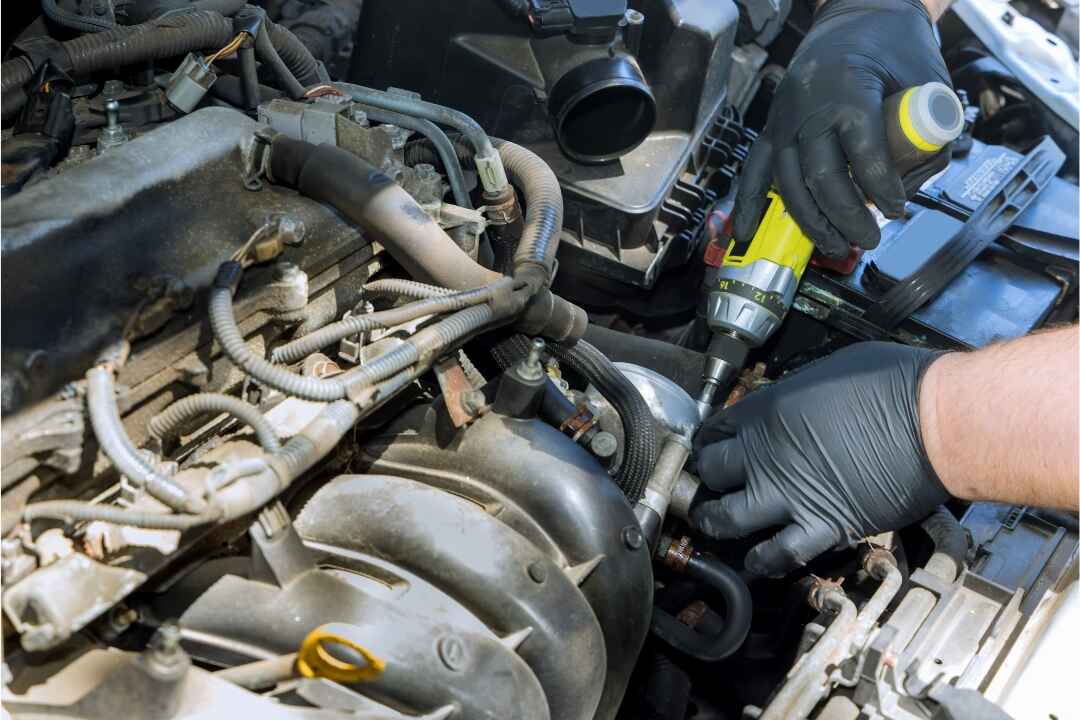When your engine starts coughing, chugging, or just feels off, your intake manifold might be the silent troublemaker behind the chaos. This often-overlooked component plays a vital role in your vehicle’s performance, yet it rarely gets the spotlight—until something goes wrong. Whether you’re a weekend warrior under the hood or a daily driver trying to decode that check engine light, understanding intake manifold problems can save you thousands and prevent headaches down the road.
In this guide, we’ll dive into 10 of the most common intake manifold issues, give you solutions that actually work, and show you how to spot the signs before things fall apart. So buckle up, friend—let’s tune into your engine’s secret language.
Cracks in the Intake Manifold Can Wreak Havoc
A cracked intake manifold is a nightmare waiting to happen, allowing coolant or air to leak—throwing your engine’s equilibrium way off.
How Cracks Start Small but Cause Big Trouble
Most intake manifolds are made of plastic or lightweight aluminum. Over time, heat cycles, age, or even poor manufacturing can cause hairline fractures. These cracks expand, allowing air to leak in, which disrupts your air-fuel mixture and causes rough idling or engine misfires.
Sealing the Deal with a Real Fix
While some mechanics patch cracks with sealants, that’s just a temporary band-aid. The real fix? Replace the manifold entirely if the damage is severe. For smaller, non-structural fissures, high-temp epoxy might buy you time—but don’t gamble with your engine’s health.
Intake Manifold Gasket Failure Is More Common Than You Think
Even the best-engineered engines can fall victim to a failing intake manifold gasket—a surprisingly tiny part with a huge responsibility.
Why the Gasket Is Your Manifold’s Unsung Hero
There is a gasket between the intake manifold and the engine that keeps the link from getting leaky. It keeps air and coolant right where they belong. Over time, this gasket can wear down, especially under extreme heat, leading to internal leaks.
When Gaskets Go Bad—What to Look For
If you’re seeing unexplained coolant loss, white exhaust smoke, or engine misfires, it’s time to inspect the intake manifold gasket. Replacement is straightforward for experienced DIYers, but novices may want a pro’s touch.
Clogged Intake Manifold Runners Can Starve Your Engine
Your manifold isn’t just a big chamber—it’s a system of runners that must be clear for your engine to breathe properly.
How Carbon Build-Up Chokes Performance
With every combustion cycle, a tiny bit of carbon gets left behind. Over time, this builds up in the intake manifold runners, restricting airflow to specific cylinders and causing poor fuel efficiency or jerky acceleration.
Get That Gunk Out
The best solution? A thorough manifold cleaning—either by removing it and scrubbing it down or using a professional intake system cleaner. Always follow with a tune-up to get the engine back to its prime.
Vacuum Leaks in the Intake Manifold Create Engine Chaos
A vacuum leak from the intake manifold can cause a wild ride—high idle, stalling, or poor fuel economy.
The Leak You Can’t See but Definitely Feel
Even a pinhole in the manifold or its connected hoses can trigger havoc. Your engine relies on a precise vacuum balance, and any disruption throws off everything from ignition timing to fuel injection.
Smoke Testing Saves the Day
A mechanic will often perform a smoke test to locate leaks you can’t see. Once pinpointed, repairing or replacing hoses—or the manifold itself—is your next step. Never ignore a vacuum leak; it only gets worse.
Intake Manifold Sensor Failures Disrupt Fuel Efficiency
Modern intake manifolds come equipped with sensors like the MAP (Manifold Absolute Pressure) sensor to relay critical data to your ECU.
When Sensors Stop Talking to Your Engine
If these sensors fail or misread, your engine control unit sends the wrong fuel-air mix into the engine, causing sluggish acceleration, poor mileage, or hesitation.
Sensor Replacement: Small Price, Big Impact
The fix? Replace the faulty sensor. It’s often an inexpensive and quick repair but has a huge impact on drivability.
Warped Intake Manifolds Can Be a Silent Killer
Heat and age can twist your intake manifold out of shape, disrupting airflow and causing sealing issues.
Why Warping Isn’t Always Obvious
Warping may not cause an instant breakdown, but it gradually worsens. You might notice performance drop-offs, engine knocking, or even overheating.
Precision Machining or Full Replacement?
Mild warping can be fixed through resurfacing at a machine shop. Severe cases need a full manifold replacement. Don’t delay—warping can ruin head gaskets and cost you way more later.
Intake Manifold Coolant Passage Leaks Can Damage the Engine
Some intake manifolds route coolant alongside air, which means a crack or defect can lead to internal coolant leaks.
Engine Coolant Where It Shouldn’t Be?
Coolant seeping into the manifold’s air passages can lead to steam in your exhaust, overheating, or hydro-lock in extreme cases.
Repair or Replace—Don’t Ignore
Inspect the coolant ports for residue. If found, replace the manifold intake immediately. A failed manifold here can total your engine if left untreated.
Poor Intake Manifold Design Hampers Airflow
Not all manifolds are made equal—bad design can hurt performance from the start.
The Case of the Power-Sapping Plenum
Some stock manifolds prioritize emissions over performance, leading to restrictive runners or bottleneck plenums that kill horsepower.
Aftermarket to the Rescue
An aftermarket performance intake manifold designed for your engine can significantly improve airflow, throttle response, and even fuel efficiency.
Intake Manifold Bolts Can Loosen or Break
Even a perfectly designed intake manifold won’t work if the bolts holding it down are compromised.
Why Bolt Torque Matters More Than You Think
Improper torque or reused bolts can loosen over time due to engine vibration, leading to leaks or warping.
Lock It Down Correctly
Always follow torque specs when reinstalling the intake manifold, and consider new bolts during replacements. A small investment for big peace of mind.
EGR System Integration in the Intake Manifold Can Cause Trouble
Many intake manifolds integrate the Exhaust Gas Recirculation (EGR) system—great for emissions, but another failure point.
When Emissions Tech Turns Into a Clog-Fest
The EGR system can gum up your intake manifold with carbon deposits, triggering check engine lights and reducing airflow.
Clean or Delete Responsibly
Routine EGR system cleaning can save your manifold. In some performance applications, EGR delete kits are available—just check legality in your region.
Conclusion: Don’t Let the Intake Manifold Be the Silent Killer
If you’ve ever underestimated the importance of your intake manifold, it’s time to change that. It’s not just a static chunk of metal or plastic—it’s the very lungs of your engine. From cracks and leaks to poor designs and faulty sensors, intake manifold problems can snowball quickly. But with the right knowledge, tools, and action plan, you can stop small issues from becoming wallet-draining catastrophes.
Remember, your engine breathes through this part. Keep it healthy, and your car will thank you with smooth acceleration, better fuel economy, and fewer unwelcome surprises.







